It seems every year I grow tomatoes, summer squash, eggplant, and chili peppers they don't get going until late summer and for a few years I didn't get any red tomatoes despite selecting the earliest varieties. I grow my own seedlings, put them in the ground, and if it's too early they get hit by frost and they always suffer from transplant shock. A friend always gets many tomatoes and he looked me in the eye (he's got this disconcerting habit of giving you a long look straight in the eyes until you feel uncomfortable) and said "plant them in tires, the soil will warm up faster and you'll get plenty of tomatoes". I have always discounted container gardening because raised beds are expensive compared to yield and containers don't scale very well unless using a hothouse and/or drip irrigation for each pot.
Containers vs In-Ground Comparison
| Containers | In-Ground |
| Container gardening is not as scalable. Some vegetables are grown in greenhouses in containers using timers and drip irrigation but this is only viable for high value crops as the equipment needed is costly. Building or buying raised beds, buying pots, buying soil for planting is costly. |
In-Ground planting is scalable. Farmers plant in the ground because it is cheaper and less work to maintain and harvest a larger in-ground planted field. In-Ground is less expensive assuming you have space in your yard and you do not need to buy soil. |
| If the growing season is short containers warm up faster so plants will start producing slightly earlier. |
If the growing season is short soils will be slower to warm up, but this can be partially compensated for by using clear or black plastic mulch or using a plastic row cover in spring. |
| Raised beds with plants growing waist high are easier to plant, maintain, and harvest. |
Plants growing at ground level require more work to harvest and maintain requiring frequent bending or crawling for some operations which may include tilling, planting, trimming, pulling weeds, and harvesting. |
| More frequent watering needed but drainage can be controlled and less water may be required. Less even water can lead to reduced yield and reduced quality, eg more splitting of tomatoes and smaller eggplants. Drip irrigation with timers would solve the problem at some cost. |
Drainage can not be controlled and more water may be required. Water is absorbed into the ground and available to plants throughout the day. Drip irrigation is also a good idea for in-ground plants as it allows for maintaining a larger area with less day-to-day effort. |
| Plants are restricted by the size of the container potentially reducing the harvest. |
Plants can grow freely above and below ground increasing per plant harvests. Plants can sprawl along the ground and some types of vegetables like squash send out adventitious roots resulting in much bigger plants and larger harvests. |
| Soil easy to ammend and the type of soil determined by what you add to the pot. Plants will need regular complete fertlizer since they only have what is available in the media inside the container. |
Plants can get some nutrients from the soil, nutrients application is more evenly distributed/buffered by larger soil mass, and plants benefit from naturally soil organisms. |
| Plants are up off the ground reducing some types of diseases and pests. |
Plants benefit from natural soil organisms and garden insects. |
| Containers may be easier to move if they are not too large or heavy. |
Plants in-ground can't be moved unless dug up potentially damaging the foliage or root system. It is more work to dig up a plant and dig a new hole to replant than it is to move a container. |
Pruning and Training Tomatoes
When tomatoes, eggplants, and chilis do start producing they produce more than can be used in a short period so it is better to get them to produce earlier and over a longer period. Given previous years' results I researched the benefits of pruning tomatoes. There is a paper on it Tashi Lhamo et. al. (2022), Effect of Different Pruning Systems on Yield and Quality of Tomato Grown Under Greenhouse, Bhutanese Journal of Agriculture. Researchers found that traiming tomatoes to a single leader (cutting off all the side shoots) resulted in 10 days earlier ripening, increased overall production, and an extended harvest period. Though overall harvest was only somewhat increased the plants continued to produce longer than those that were not pruned (these were greenhouse-grown so not limited by season length in the experiment).
Use Large Cells For Seedlings or Start With Cuttings
I kept 8 Physalis peruviana plants and 5 Black Prince tomato cuttings alive during winter to start in the spring and started this year's seedlings in bigger cells than in previous years. Start seedlings individually in larger containers such as 3½ x 3½ x 5½ inch tall form pots so they will suffer less from transplant shock and can get larger before outplanting. Using trays with small cells or community-planted seedlings in trays crowded together which must be separated is a mistake. By community planting, I mean using a tray or pot and just spreading the seeds and allowing them to germinate together. Plants can be stunted in small cells and separating individual seedlings before transplant disturbs the roots.
Starting Seeds
Grow seedlings from seeds, don't buy plantlets from the store if you can avoid it. Recently chili and tomato starts at the store were more than $5 each after tax and I doubt I'd get $5 of jalapeno chili peppers off each plant. Homegrown heirloom tomatoes are better tasting than store-bought and heavy producers by weight so if successful could be worth the extra cost. Seeds are economical and the best way to get plants started! Soak seeds overnight to speed up germination. Physalis require light to germinate so soak the seeds overnight, place them on top of the soil, and cover them with clear plastic wrap to keep the seeds moist until they germinate. If I have extra seeds I add an extra to each cell to one side just in case the first one doesn't grow.
Transplanting
Protect plants from frost or wait till all danger of frost has passed before transplanting outside. If there is more than 1 seedling in a pot it is better not to separate them, plant both together or cut out the smaller one. Tomatoes, squash, chili peppers, and eggplant make make roots along the stem easily so can be transplanted is deeply. Plant up to the first set of real leaves or remove a set of leaves and plant even deeper.
Tires seemed like a viable option but, being busy planting corn, I opted to use my left-over #5 black pots (in retrospect these are not big enough for squash and barely big enough for chili, eggplant, and tomatoes). I had several large 10 gallon pots of leftover potting soil which my cats use as a litter box so this year I decided to put the soil to a different use. Potting soil is very expensive so mix your own or use regular garden soil.
Put a plastic sheet at the bottom to cover the holes or better a heavy-duty garbage bag inside the pot to reduce drainage out the holes and cut off the extra.
Potting Soil Recipes vs Garden Soil
Use garden soil if you can or if your garden soil is too heavy mix organic matter with your garden soil. Do not use fast-draining potting soil or the indoor houseplant potting mix to up-pot vegetables to 5 gallon containers as the soil will not hold enough water, the plants will require very frequent watering, and the squash, tomatoes, chilis, and eggplants will get blossom end rot. It is better to use 10 gallon pots and/or use garden soil which will retain more water. My summer squash were small and dry, the chili and tomatoes had blossom end rot, until up-potted with silty soil. When I ran out of larger pots I replaced the top 1-3 inches with silty soil. I never buy compost, topsoil, or garden soil because it mostly contains wood chips, sand, and small rocks which improve drainage but do not benefit plants. If your garden soil has too much clay, too much sand, or is low in organic matter amend with peat moss or coco coir (buy in bulk - a 3cu ft. compressed bale).
I up-potted the squash using the 10 gallon pots with a heavy-duty garbage bag inside (not a plastic sheet) with the extra cut-off. The plastic bag must have at least a small hole to drain water or the flooded conditions and lack of oxygen will rapidly kill the plant. I added silt to the bottom (turns out we have a lot of silt not loam) around and on top of the houseplant mix and they are doing much better! I can even skip watering a day. I recommend using #10 pots lined with a garbage bag for container vegetables and using regular soil or even sandy soil as long as it is not very high in clay. If the plants need extra drainage later, a small hole can be made in the garbage bag where drainage holes are located to prevent salt build-up.
The problems I have had with container vegetables could be fixed in the beginning by usinga 10 gallon pot and regular garden soil with a cut plastic sheet at the bottom to reduce but not completely block drainage. Don't buy expensive garden soil or compost which is mostly wood chips anyway. If you have a lot of clay mix it 50:50 with compost to improve drainage.
Fertilizer
Osmocote was good for initial plant growth but the container plants' growth had slowed down by the end of June and they needed more fertilizer. I made several buckets of a 5 gallons mixture including 5 Tbsp Peter's water soluble fertilizer + 1-2 Tbsp Epsom Salt + pinch of Iron EDDHA Chelate + 5ml tomato micronutrient mix and use 6 pints of this mix watered per container. Only use Epsom Salt for initial application since excess Magnesium will inhibit update of Calcium and cause blossom end rot. I also use a few pints on this on each in-ground chili, eggplant, and tomato plants. Please note this recipe uses 3 times as much micronutrient mix as advised for hydroponics since this is only applied as needed not continuously.
5 Gallon Fertilizer Recipe
- 5 gallons of water
- 2 Tbsp. Peters 20-20-20 General Purpose Fertilizer
- 1-2 Tbsp. Epsom Salt
- 1 pinch of Iron Chelate EDDHA for high pH soils
- 1 Tbsp. micronutrient hydroponic stock solution
- 1 gallon of distilled water
- 63g Boric Acid
- 57g Maganous Chloride
- 9.9g Zinc Sulfate
- 3.1g Cupric Chloride
- 1.3g Molybdenum Trioxide
| Pictures of Potted Plants | |||||
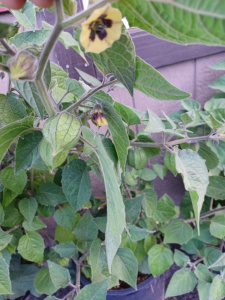

Physalis peruviana / Overwintered
|
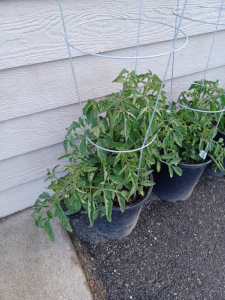
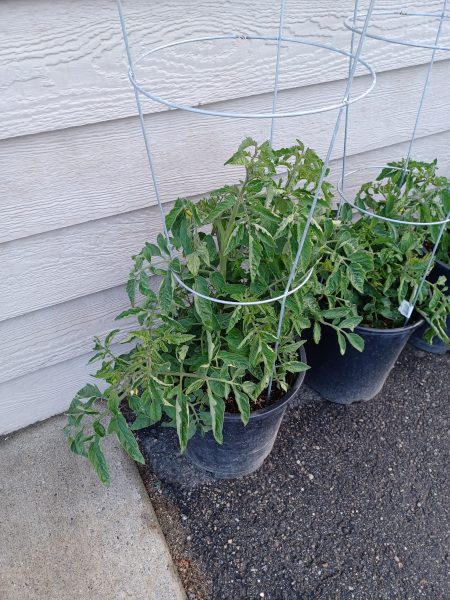
Tomato Cutting / Overwintered
|
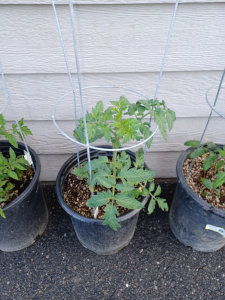
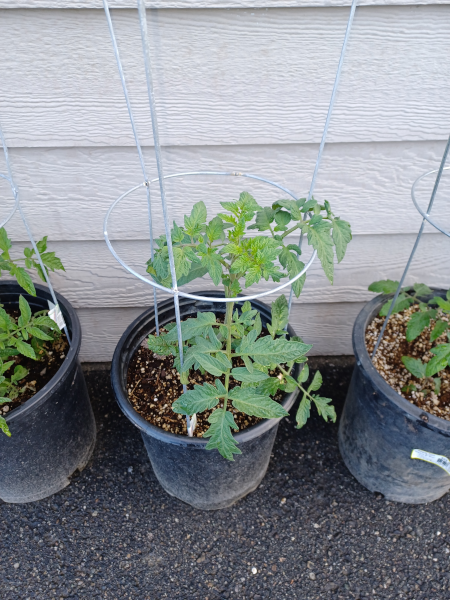
Tomato Seedling / Large Tray Cells
|
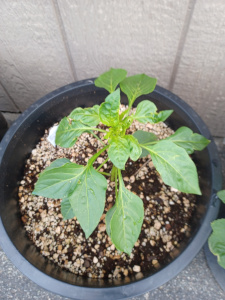
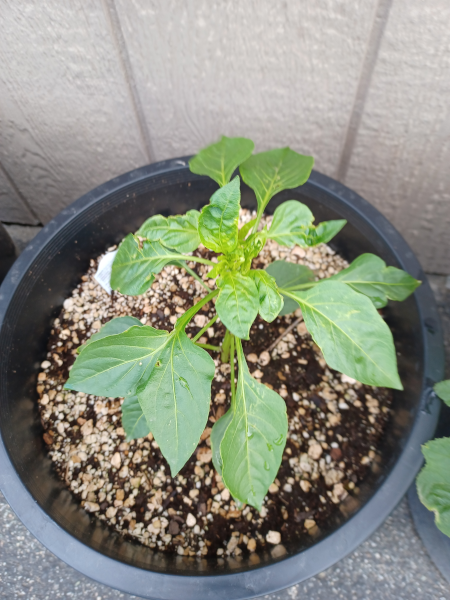
Chili Pepper / Store Bought
|

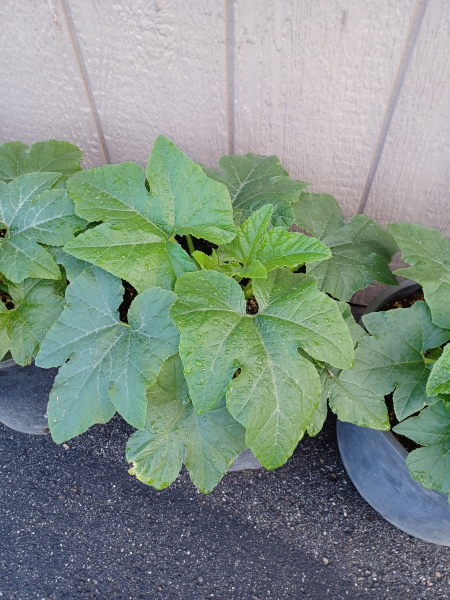
Summer Squashes / Community Tray
|
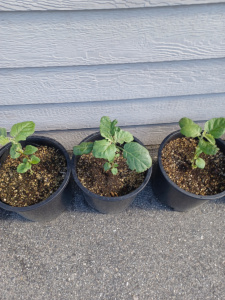
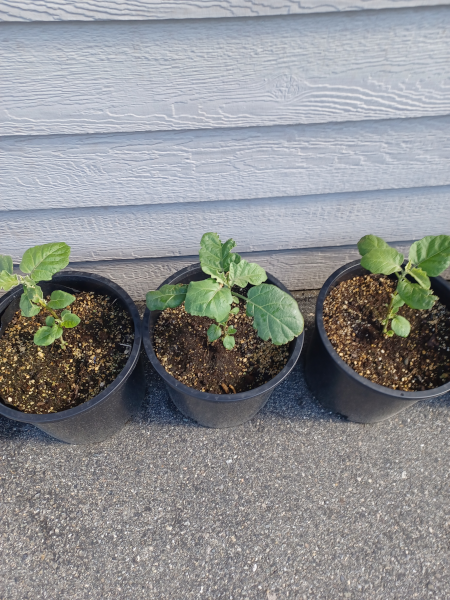
Eggplants In Containers / Community Tray
|
| It would be fair to compare the tomato cutting 2nd from left above to the tomato seedling 3rd from left above and the tomato seedling 3rd from left above to the tomato seedling 3rd from left below. Both the potted eggplant and chili pepper look better than the in-ground counterparts. | |||||
| Pictures Of In Ground Plants For Comparison | |||||
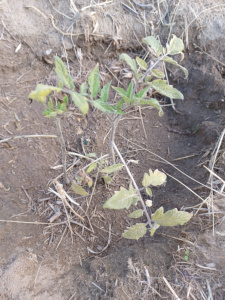

Tomato Seedlings / Large Tray Cells
|
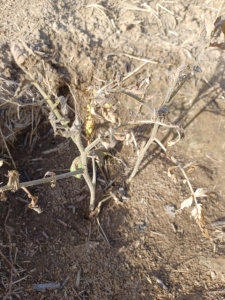
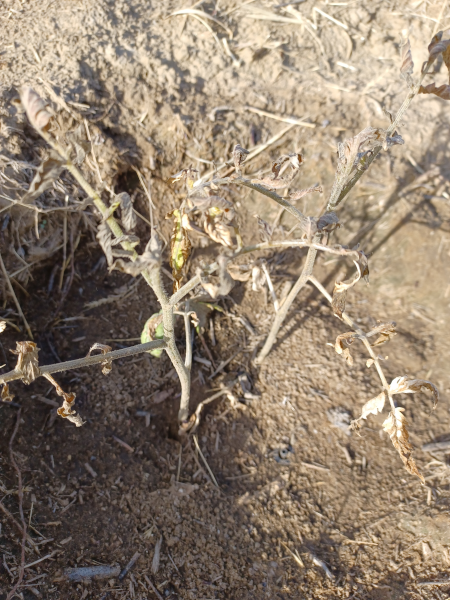
Tomato Seedlings / Over Fertilized?
|
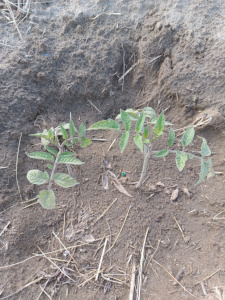
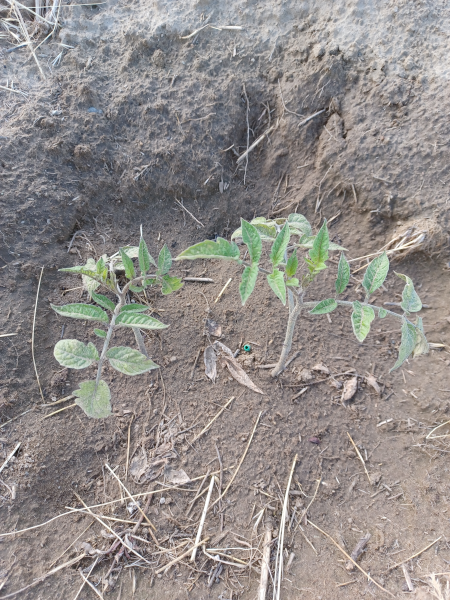
Tomato Seedlings / Large Tray Cells
|
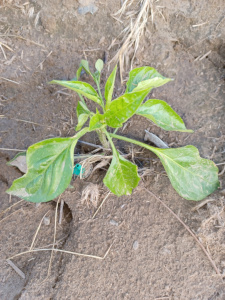
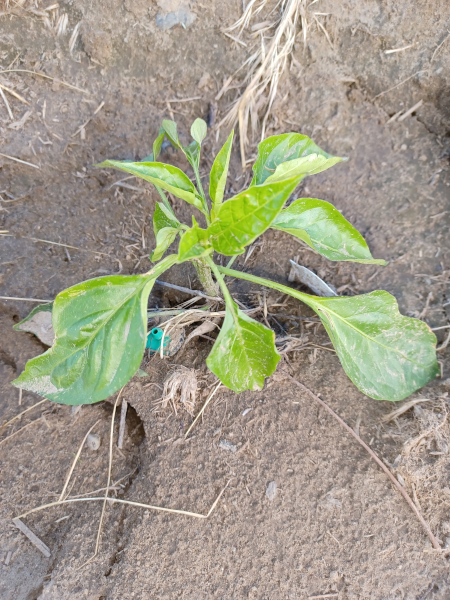
Chili Pepper In Ground / Store Bought
|


Chili Pepper In Ground / Community Tray
|

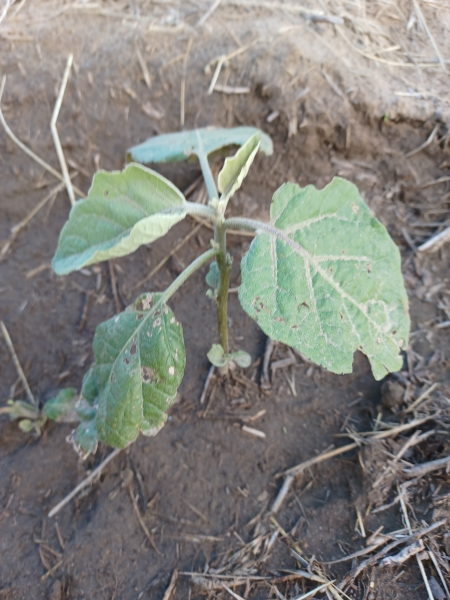
Eggplant In Ground / Community Tray
|
The chili in the picture is a store-bought banana pepper, and the eggplant (long green) and yellow summer squash seedlings were grown in a community tray, put outside and damaged by frost, and then separated into individual plantlets. We had an early "summer like" hot period then couple very late frosts on May 20th and the 26th. The actual minimum temperatures on our property are regularly 5-7°F lower than reported at the airport a mile away, so a forecast of less than 39°F means possible frost. This makes the 30 year average -7°F and growing zone should be revised from 6b to 6a. June 16th 2024 there was frost on the windshield at 5:30am and corn several places on the property were damaged by the unexpected low temperatures.
(July 9 Update)
The container plants are ahead of the in-ground tomato plants being 3 times larger and the in-ground chili and eggplants being 5 times or more larger. The container grown eggplants started blooming around the first of July with the long green eggplant starting earlier than the Japanese long purple eggplant. There are 5-10 Jalepeno and Banana Peppers on each plant about ready to be picked and some of the tomatoes are starting to turn color.
| Jul 9th Comparison Photos | |||||

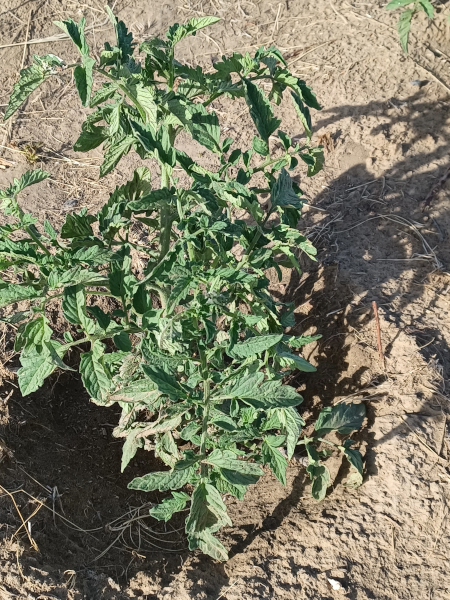
Tomato / In Ground
|
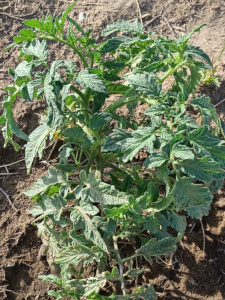
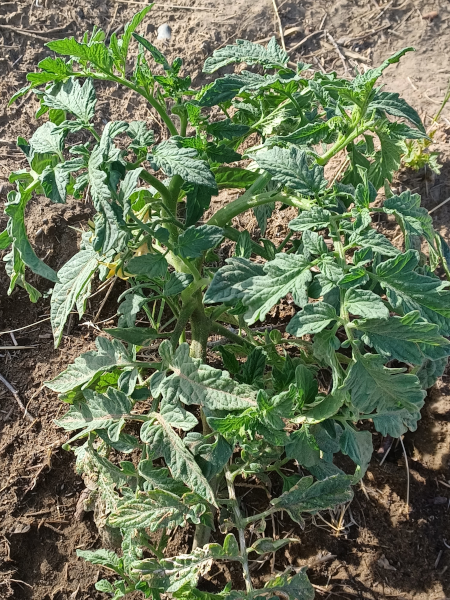
Tomato / In Ground
|

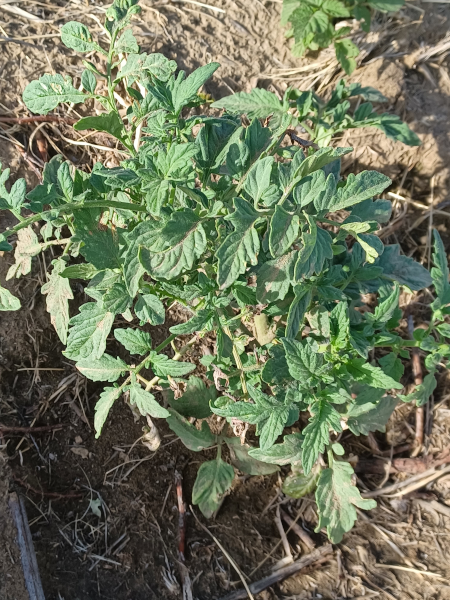
Tomato / In Ground
|

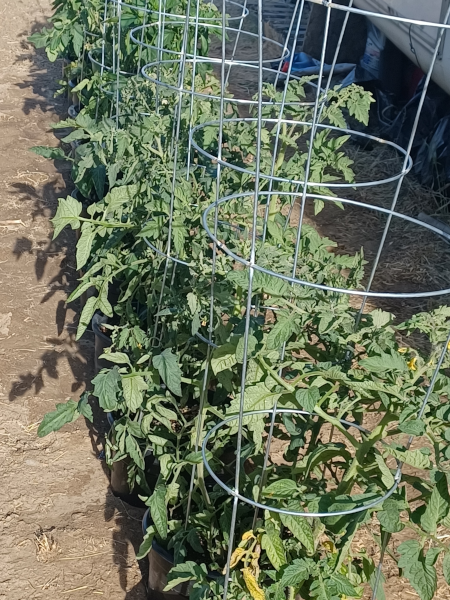
Tomatoes / Containers
|
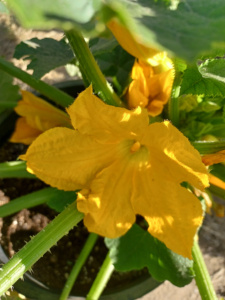

Summer Squash / Container
|
|
| Since these photos the in ground tomatoes are growing with a few fruit and the largest are ⅔ the size of the container grown tomatoes. The immature fruit of one of the container grown tomatoes had blossom end rot and were discarded. | |||||
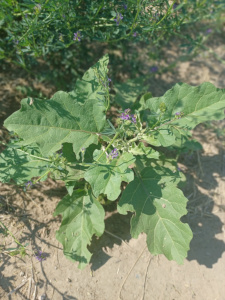
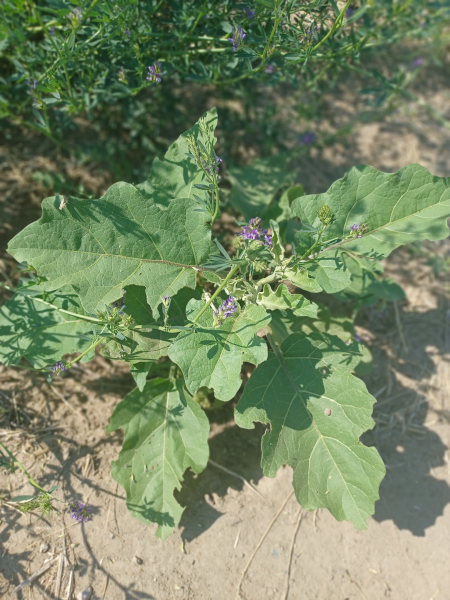
Green Knight Eggplant / In Ground
|


Green Knight Eggplant / In Container
|

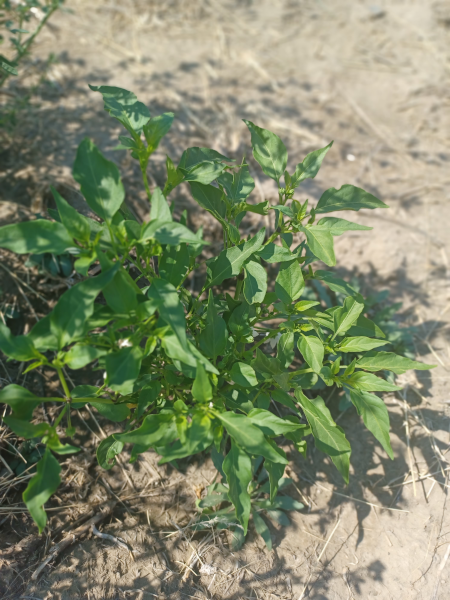
Banana Chili Pepper / In Ground
|
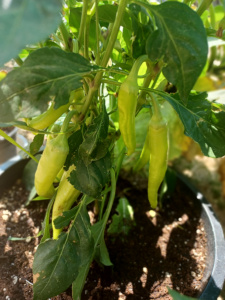
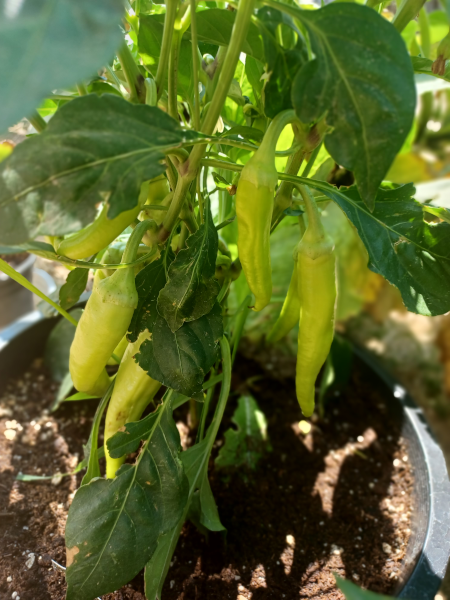
Banana Chili Pepper / In Container
|
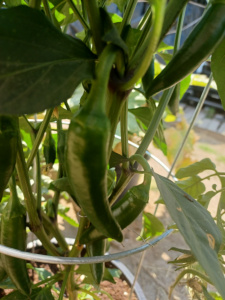
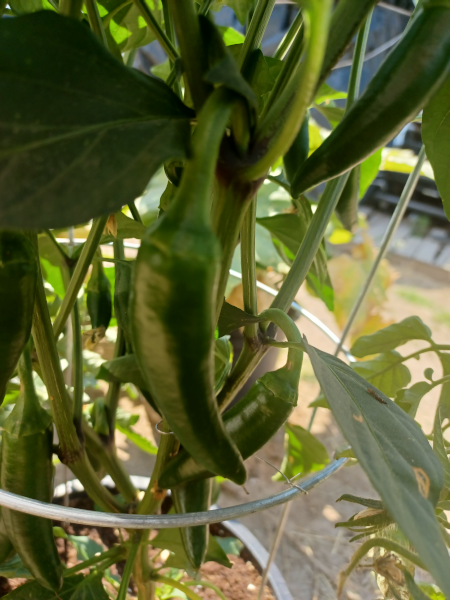
Jalepeno Chili Pepper / In Container
|
|
The container tomatoes are not growing as well as they could if correct sized pots and appropriate soil had been used, they wilt if not watered twice a day. The in-ground plants have recovered from transplant and freeze shock and after applying 2 pints of the fertilizer recipe twice to each in-ground plant they are beginning to catch up. These are also watered with ½ gallon per minute drippers at 12:00 noon and midnight plus a manual 15 minutes most evenings. Contrary to most recommendations watering more frequent and less deeply is better for our soil conditions.
After these photos the squash were transplanted to 10 gallon containers adding field soil (silt) and now require less frequent watering and produce better quality fruit.
July 22 Update
We have gotten quite a few summer squash, many chilis, and a few eggplant from the container vegetables. We have only gotten one or two small poor looking red tomatoes and thrown away a few with blossom end rot. We up-potted some container tomatoes to 10 gallon pots with silt and replaced the top 1-2 inches of others. One had no hole in the plastic bag, got flooded, and died. Many of the in-ground tomatoes are about the same size as the container tomatoes and have green tomatoes forming. Some of the in-ground chiles are half the size of the potted chilies and started producing a few some chiles later than the potted chilies. Conclusions so far are that chiles do exceptionally well in pots, long green Japanese Eggplant form sooner and have larger fruit than the same sized Green Knight Eggplant (so far), summer squash do well enough in large pots but would be better put in the ground, and growing tomatoes in pots doesn't result in much of an earlier harvest. And, to reduce wasted effort use the right soil at the outset.